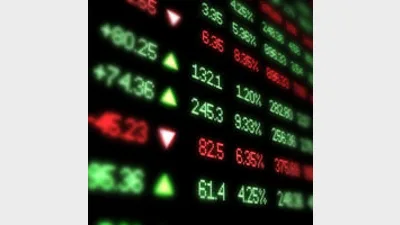Super funds headed toward majority ASX control



Superannuation funds could control more than half the Australian Securities Exchange (ASX) within 15 years, with the portion it holds in ASX-listed domestic equities experiencing faster growth than market capitalisation of the Exchange.
Super funds currently held almost 40 per cent of the ASX, representing $700 billion, with an increase of 6.7 per cent over the past five years and 9.4 per cent over the past decade. Should this holding continue its current growth of one per cent per year, in 10 years ownership levels would be 50 per cent, and in 20 years, 60 per cent.
According to Rainmaker Information, not for profit super funds accounted for just under half of the industry’s total ownership of ASX stocks, retail funds one quarter, and self-managed super funds (SMSFs) 27 per cent. Further, Australian Prudential Regulation Authority (APRA) regulated funds held an estimated 20 per cent of the banking sector, with the inclusion of SMSFs potentially bringing that to one third.
The most popular companies for super funds were led by CSL, followed by NAB, Westpac, ANZ, BHP Billiton, Commonwealth Bank, Wesfarmers, Macquarie Group, Woolworths, and Telstra.
These companies could have to get used to having larger, more interested investors should super funds become their dominant shareholders, executive director of research at Rainmaker, Alex Dunnin, said.
“While this may challenge some companies that are not used to dealing with larger, active investors, the upside is that this new dynamic will lower the cost of capital for these companies and will actually help them expand their growth opportunities,” he added.
Recommended for you
Australia’s largest super funds have deepened private markets exposure, scaled internal investment capability, and balanced liquidity as competition and consolidation intensify.
The ATO has revealed nearly $19 billion in lost and unclaimed super, urging over 7 million Australians to reclaim their savings.
The industry super fund has launched a new digital experience designed to make retirement preparation simpler and more personalised for its members.
A hold in the cash rate during the upcoming November monetary policy meeting appears to now be a certainty off the back of skyrocketing inflation during the September quarter.










It is the pension/superannuation funds and insurance companies that push up stock markets which are overvalued everywhere by traditional valuation measures. They provide the downside support. They necessarily have to invest their continuous flow of funds somewhere and where other than stock markets? If markets falls to their fair values, based on their earnings and return on capital employed, it would be disastrous to the pensioners and insurance policy holders. It is crucial that anybody invests in stock markets based exclusively on intrinsic valuation, based on normalized interest rates, and earnings. Not out of lack of other investment opportunities.